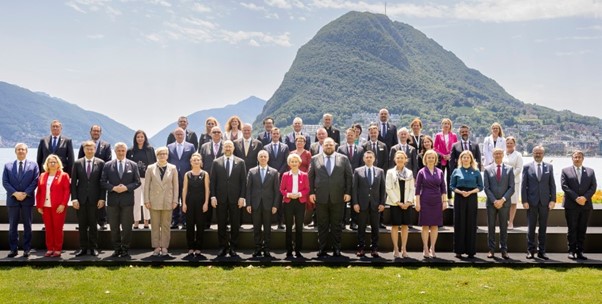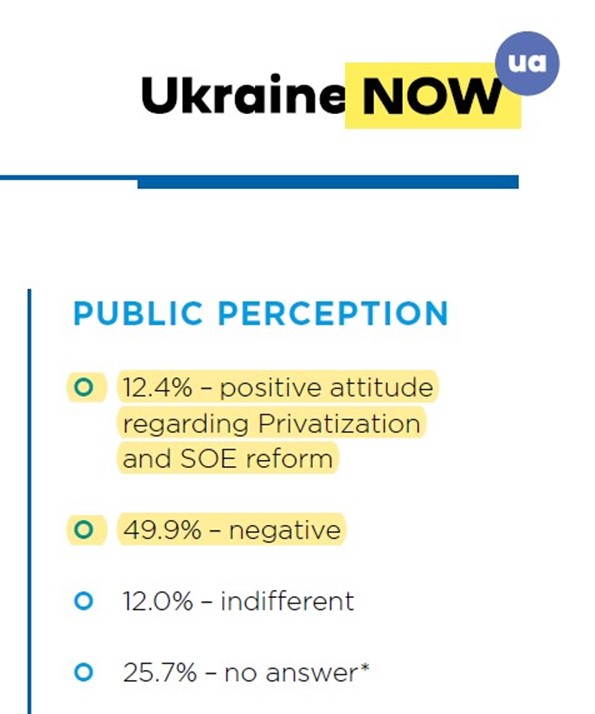
Once a trade conference of sorts for the activist fringe, the hard-right Conservative Political Action Conference (CPAC) has enjoyed an increasing amount of influence within the American conservative movement in recent years. The ascendancy of Donald Trump’s MAGA movement in 2015-16 irrevocably shifted the center of gravity of today’s GOP toward a more nakedly extremist, conspiratorial, anti-democratic, and revanchist “populism,” thus placing CPAC firmly within the mainstream of the Republican party.
CPAC itself has been undergoing its own ideological and political realignment, increasingly focusing its energies internationally, reconfiguring the formerly once-a-year conference based in Washington, DC, into a traveling road show.
Over this same period, CPAC itself has been undergoing its own ideological and political realignment, increasingly focusing its energies internationally, reconfiguring the formerly once-a-year conference based in Washington, DC, into a traveling road show. The first international CPAC took place in 2017 in Japan, and others have since taken place in Australia, Brazil, Hungary, and South Korea. Future conferences are also scheduled to take place in Mexico and the Philippines. But this isn’t just about changing the venue of the conference; animating all of this is a growing far-right internationalism that can be seen and heard throughout the program and among the attendees.
This internationalist turn has helped deepen alliances between a coalition of hard-right political parties, activists, and national leaders like Hungarian Prime Minister Viktor Orban, all sharing a certain familial resemblance and a common interest in anti-immigrant, identitarian, and deeply illiberal approaches to governance.
I’ve been able to witness this shift in part, having attended three CPAC events in the United States over the last two years. In 2021, the presence of international speakers on stage was notable, but the feverish conspiracism of the domestically oriented speakers overshadowed the growing internationalist alliance.
Now, in 2022, this hard-right coalition, which some commentators have dubbed the Nationalist International, has only become more conspicuous with the arrival of Orban to the CPAC stage in Dallas, Texas. Orban was perhaps the most warmly received of the speakers in Dallas, aside from fan favorite Donald Trump. “Globalists can go to hell, I have come to Texas,” he bellowed to great applause.
This internationalist turn has helped deepen alliances between a coalition of hard-right political parties, activists, and national leaders like Hungarian Prime Minister Viktor Orban, all sharing a certain familial resemblance and a common interest in anti-immigrant, identitarian, and deeply illiberal approaches to governance.
Ahead of Orban’s speech on Aug. 4, the first day of CPAC Texas, a young man from Oklahoma approached me in the vendor hall and expressed in no uncertain terms that Orban was the man he had come to see. I asked the young man what he thought about the resignation of Orban’s longtime advisor Zsuzsanna Hegedus after Orban gave a speech Hegedus described as a “purely Nazi diatribe worthy of Joseph Goebbels.” He was aware of the incident, but it didn’t seem to impact his interest.
“In Hungary, we introduced a zero-tolerance policy on racism and antisemitism,” Orban said to the crowd, in clear reference to the fallout with his advisor. “So, accusing us is fake news. And those who make these claims are simply idiots.”
Orban went on to say conservatives “should unite our forces” and received huge applause when the speech took a religious turn. He compared Hungary to David, described so-called “globalists” as “woke Goliath,” and made clear his opposition to LGBTQ civil rights.
“Hungary shall protect the institution of marriage as the union of one man and one woman,” Orban said to great applause at CPAC Texas. “To sum up, the mother is a woman, the father is a man, and leave our kids alone.”
After Orban’s speech, while I was chatting with anti-Orban protesters in the lobby, the same young man walked by again and yelled out to me, “great speech, right?”
Later on, a segment titled “The World is Watching” saw representatives from Japan, Hungary, and Mexico speak back to back. One of the speakers, Mexican actor and activist Eduardo Verástegui, had seemingly been confused on the initial agenda listing with Eduardo Bolsonaro, the son of hard-right Brazilian President Jair Bolsonaro, who spoke at CPAC Hungary in May.
“These new socialist governments are all committed to a cultural Marxist agenda,” Verástegui said, referencing the “Cultural Marxism” conspiracy theory that is itself rooted in Nazi propaganda. “Their goal is to destroy the Judeo-Christian civilization of Latin America,” he continued, quickly and casually erasing the history of “Judeo-Christian civilization’s” genocidal obliteration of Indigenous populations that existed there long before.
As a toxic mix of conspiracism, religious fanaticism, and ultranationalism cries out in the United States, the rhetoric that has become the hallmark of this brand of reactionary politics isn’t staying put on American soil. It sings in chorus with similar voices across the world, inspiring and amplifying the rhetoric of hardline politicians like Orban.
Hiroaki “Jay” Aeba, chairman of the Japanese Conservative Union and former political head of Happy Science—a cult that denies the Nanking Massacre ever occurred—implored the audience to take to the Metaverse to protect their free speech rights. And Miklos Szantho, managing director of the Hungarian government-funded Center for Fundamental Rights, pushed an openly internationalist line after speaking forebodingly about the ostensible threats to Western civilization.
“It is crucial for us to work together internationally to make the Liberals’ nightmare,” Szantho said, “through the international cooperation of conservative national forces.”
Taken together, these speeches illustrate the uncanny synchrony of the language used by members of the Nationalist International, as well as the ability of American conservative politics to set the tone (and provide a template) for far-right movements around the world—and for the international alliances they’re forming. As a toxic mix of conspiracism, religious fanaticism, and ultranationalism cries out in the United States, the rhetoric that has become the hallmark of this brand of reactionary politics isn’t staying put on American soil. It sings in chorus with similar voices across the world, inspiring and amplifying the rhetoric of hardline politicians like Orban.
But the Nationalist International isn’t a club exclusively for the power elite, and it wouldn’t exist without a movement of followers. A group called the European American Community advertised a reception with activists on the second day of CPAC Texas. The group describes its Facebook page as “a safe place for fellow America First Patriots to discuss ethnic nationalism, identitarianism, and the future of our Historic Anglo American Nation and European Race.”
Meanwhile, on the CPAC exhibition floor inside the Hilton Anatole, a nonprofit group called Republicans for National Renewal manned a branded booth and networked with fellow die-hard activists. The group describes its aim as “promoting national-populism within the Republican Party.” In May, they hosted a summit around the CPAC Hungary event titled “The Future of Western Renewal: A Transatlantic Patriot Summit.”
“This gathering, along with the CPAC Hungary event, demonstrates the interconnectedness of American and European far-right thinking, and highlights the xenophobic, nationalistic rhetoric that is being promoted—and applauded—on both sides of the Atlantic,” the Anti-Defamation League reported in June.
As Thorleiffson writes, ultranationalism, and the “ultra-nation” can be understood as nationalism that takes on a quasi-religious, if not outright religious, character. Something right at home at CPAC Texas, where Texas Lt. Gov. Dan Patrick asserted that the constitution was literally written by God before leading the crowd in prayer.
The phrasing around “Western Renewal” may seem innocuous, perhaps even positive, to the uninitiated. But the veiled language of “Western Renewal” is steeped in a history of far-right, often antisemitic, politics, and it is used today as a dogwhistle by groups hellbent on stemming “undesirable” immigration and rejecting the very concept of multiculturalism for a return to more “traditional” and racially, ethnically, culturally homogenous societies. In particular, the language of “Western Renewal” is popular in extreme spaces like 4Chan. As extremism researcher Cathrine Thorleifsson wrote in November 2021, “on [the 4Chan forum] /pol/, it is evident that the fascist new order and the regeneration of the ultra-nation are conceived in transnational terms of European or Western renewal as a whole, thus promoting violent action globally.”
As Thorleiffson writes, ultranationalism, and the “ultra-nation” can be understood as nationalism that takes on a quasi-religious, if not outright religious, character. Something right at home at CPAC Texas, where Texas Lt. Gov. Dan Patrick asserted that the constitution was literally written by God before leading the crowd in prayer. Per Thorleiffson, the relationship between fascism and the idea of the “ultra-nation” can be situated through the conceptualization of fascism proposed by British historian and political theorist Roger Griffin, which frames fascism as an ideology characterized by populist ultranationalism that contains mythical ideas of national revival, often hearkening to a lost, racially coded past.
Members of the Republicans for National Renewal have ties to white supremacists and other extremists. As reported by The Daily Beast in November 2021, the grassroots director of Republicans for National Renewal formerly hosted a neo-Nazi themed podcast called “Blood, Soil, and Liberty” with a member of a now-defunct white supremacist group, Identity Evropa. This event was not an outlier. The same ADL article from June describes Republicans for National Renewal’s numerous connections to a variety of extremists, some of whom speak in openly antisemitic terms.
Among those extremists with links to Republicans for National Renewal is Jack Posobiec. Posboeic, a far-right, conspiracy-theory-peddling media personality whose ties to neo-Nazis and other extremists have been extensively documented by the Southern Poverty Law Center, had a prime speaking spot at CPAC Texas. He used the opportunity to promote what he calls the “New Right,” a clear attempt to rebrand the hateful “alt-right” term that has declined in use in recent years.
If CPAC Texas is any indicator, there isn’t much new about the “New Right”—except, perhaps, its growing internationalism. But Orban speaking at CPAC Texas is less of a beginning for this international right-wing movement than a culmination, not unlike how a mushroom cap is just the most visible part of a deeper mycological network. The authors of the book The International Alt-Right: Fascism for the 21st Century? trace the transnational quality of the alt-right across Europe, as well as in countries as diverse as Japan, India, and Russia. Through an examination of the history of the alt-right and its various ideological strains, they draw out the distinctly nativist quality of the movement, which often manifests as a politics of white supremacy, and they elucidate the modern tactics the movement uses to spread its ideas, such as “meme warfare.”
As the authors of The International Alt-Right define it, the Alt-Right’s core belief is that “‘white identity’ is under attack from pro-multicultural and liberal elites and so-called ‘social justice warriors’ (SJWs) who allegedly use ‘political correctness’ to undermine Western civilization and the rights of white males.”
And indeed, if you were sitting in the audience at CPAC Texas, that’s not far from the sort of narrative you would have heard.
“A new Marxism has infiltrated all parts of our lives as a master thief,” said Szantho. “It wears many cloaks, depending on what seems most effective. It appears as BLM, the cult of radical race theory, or gender ideology, and what was once known as progressive. Better called by its name, Marxism.”
Even if its headline American representative is no longer in office, the emboldened Nationalist International and international alt-right should concern American antifascists. Autocratic leaders like Orban have more ability to play the long game, and their commitment to hardline nationalist agendas hasn’t faded during the Biden presidency in the slightest. Trump won millions of votes in 2020, and the brand of ultranationalism he helped foster in this and other countries is here to stay for the foreseeable future.








